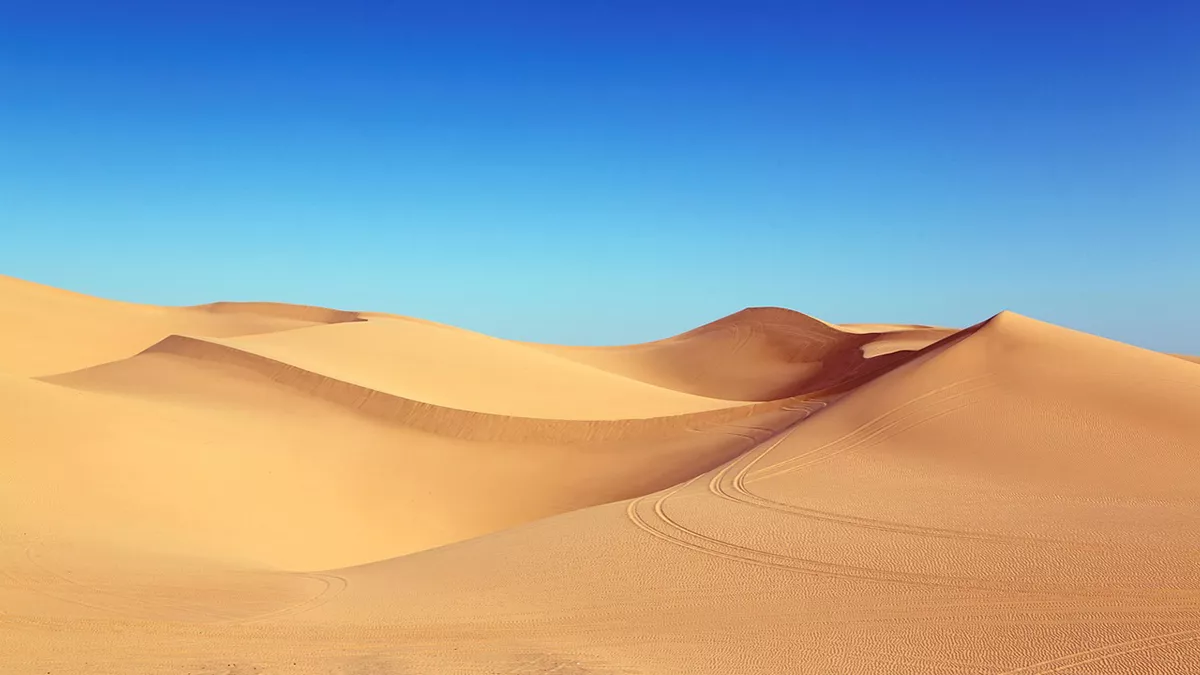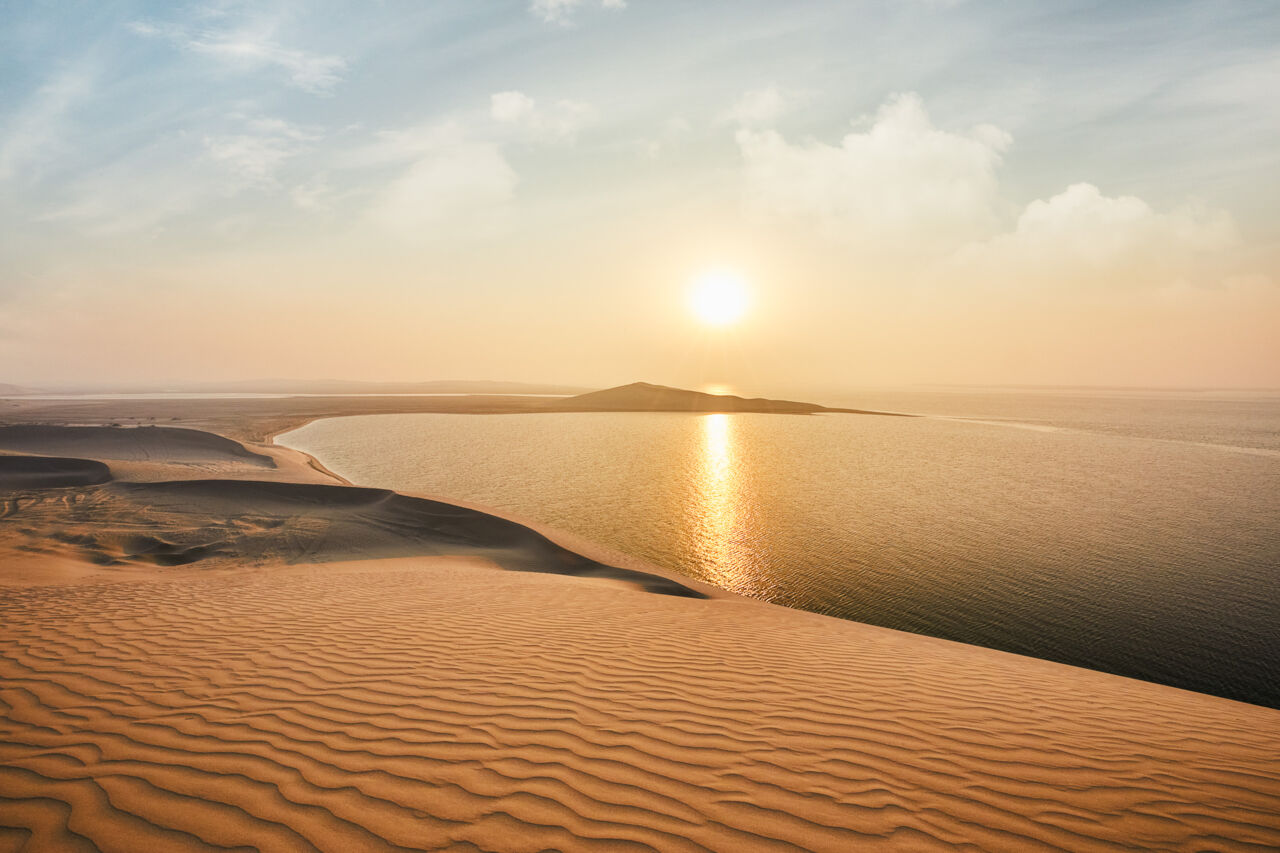
Qatar has a captivating desert landscape with mesmerizing secrets that allure foreigners.
Mesaieed Desert holds a beautiful secret and that is the singing sand dunes which will surely make you wonder at nature’s best-kept secrets.
Imagine standing atop a magnificent sand dune, the sand beneath your feet starts to sing along with the wind passing by, creating an otherworldly sound. It is one of the most fascinating mysteries of nature that has not stopped attracting people.
At Mesaieed Desert you can experience more with Dune bashing which includes driving strong off-road vehicles across sand dunes. Navigate the steep slopes and exhilarating drops with an expert driver and get yourself the adrenaline rush you have been waiting for.
Those desperately seeking a break from the city chaos can find time to enjoy the celestial wonders by laying back on soft sands and if lucky could wish upon a shooting star.
And there is more. You could take part in traditional dances around campfires or savour authentic food to fully immerse yourself in Qatari culture.
Desert roses are another fascinating work of nature and have become the national emblem of Qatar.
What is a desert rose? Since the feature is named “desert rose”, most of us are likely expecting some kind of weird but attractive wildflower or something but actually, it is a natural formation of sand, seawater, and gypsum or barite crystals. The crystals resemble petals, and that is how it got named the desert rose.
Curious to see one close. You can find desert roses in Umm Bab, Qatar, and the inland edge of coastal sabkhas and under inland sabkhas.
Sandy dunes at Khor Al Adaid (the Inland Sea) is yet another unique feature of Qatar that is sure to give you some blissful moments. Khawr al Udayd is an inlet of the Persian Gulf in southeast Qatar, bordering Saudi Arabia. It is also known as Khor Al Adaid and Khor al-'Udeid. Three spectacular sand dunes meet the sea in this picturesque location and it is Qatar's largest nature reserve. The lagoon’s continuous infilling, and the way its sabkhas quickly form, make it special.

Now go for a different terrain with the Rocky desert or Hamada. Rocks are formed by the weathering of local bedrock and joined by particles from sand and rainstorms and this rocky desert or hamada is the ecosystem most commonly found in Qatar.
You will also spot many sabkhas which are formed due to saltwater coming in contact with low-lying land, giving the plains a salt-encrusted appearance. You can witness these lonesome beauties on the way to Khor Al Adaid (the Inland Sea).
The biggest inland sabkha (salt-flat) habitat in the Persian Gulf is found in Dukhan Sabkha, which is situated in the northern part of the Dukhan area in western Qatar. The sabkha is unique in that it accommodates Qatar's lowest point and is located around 10 km east of Dukhan.
As per Geologists the depression dividing the Dukhan Sabkha from the Bay of Zekreet - Rawdat Jarrah, was an extension of the bay before the decline in sea levels approximately 3,000 years ago. Studies indicate that the sabkha is nourished by seawater from the Bay of Zekreet.
The sabkha has extremely high radioactivity due to its high uranium concentration.
The sabkha has a high salinity level. A desert environment, salt deposition from sediment runoff, and seawater intrusion are a few of the causes of this. All major nutrients are absent from the soil, with the exception of calcium and salt chloride.
Explore the unique enchanting geographical features of Qatar and fill in your memories with unusual terrains.
